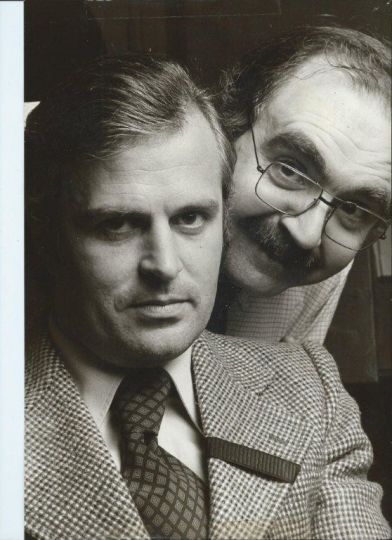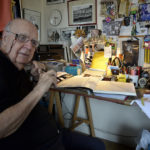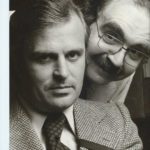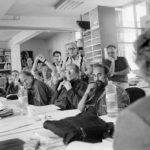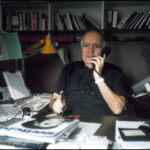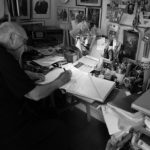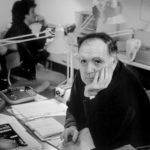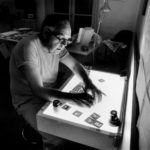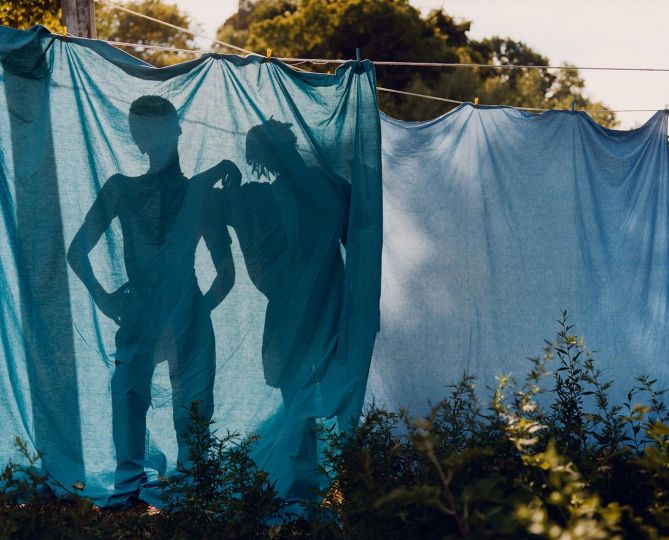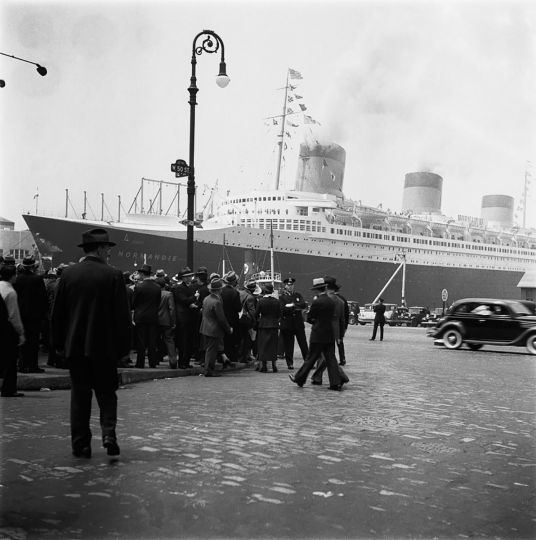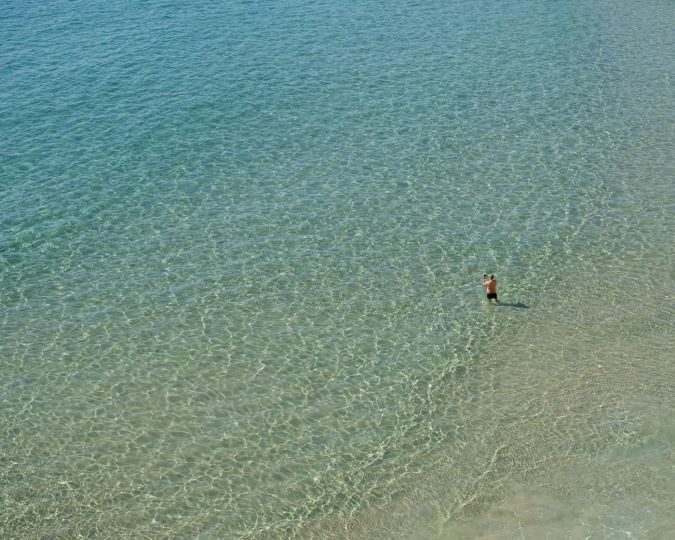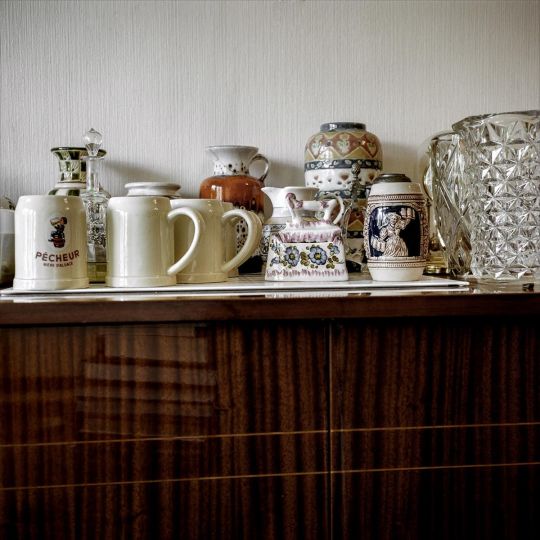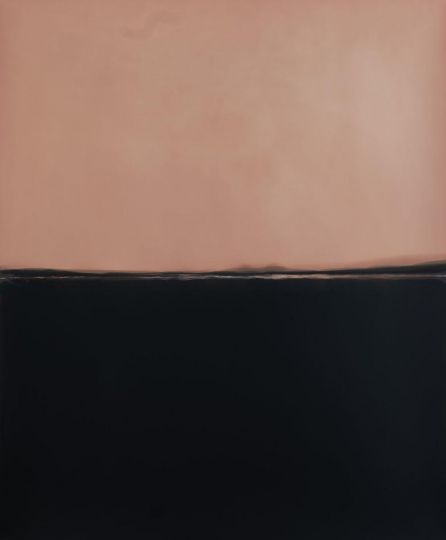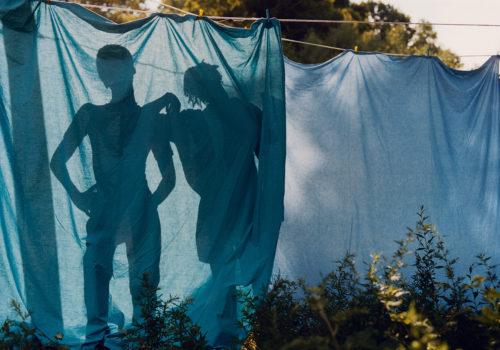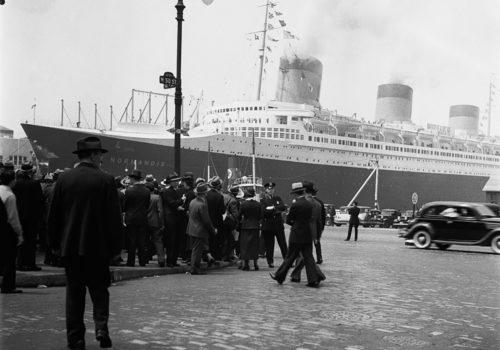Death of a legendary picture-editor
James A. Fox called Jimmy, died on Saturday June 18, 2022, the date would not have displeased this admirer of General de Gaulle. Very British, Jimmy Fox was one of the great figures of photojournalism of the last century. Man in the shadows of a famous agency. He was 87 years old. The ceremony took place on Wednesday June 29, 2022 at 4 p.m. at the Père-Lachaise in Paris.
“When life hangs by a thread, the price of thread is really crazy! » Daniel Pennac, Christian Simonpietri’s favorite quote
James A. Fox a.k.a Jimmy Fox, born July 3, 1935 in Ypres, Belgium, of British nationality was a photojournalist all his life. Sunday photographer, picture-editor the rest of the week, nights included.
In the 1970s and following, he was a “figure” for the young reporter photographers born in May 68. We knew his ethics and his passion for photography. He was the chief picture-editor of Magnum Photos. The temple of photojournalism. He was editor in the Paris office then in bad grace with the New York office. An essential man of the trade. The man in the shadows, of an agency, still radiant with the auras of Capa and Cartier-Bresson.
“I am a 1930s alumnus of Eton Memorial School in Ypres, Belgium. It is a school built in memory of the 342 pupils of Eton College who died in the “14/18” war in the battles around Ypres. I have just written a book about Eton Memorial School called The Children who Fought Hitler. With my parents we were the victims of the evacuation of Ypres in May 1940. Many children were taken prisoner, were detained during the war and others joined the English Resistance in France, and in Belgium. Jimmy Fox wrote to me in the years 2010 to 2013 during which we exchanged many letters.
And then there was a legend about him that became reality for me when he published his book BOXE. In the photo agencies of the time, the “head of news”, which was later called, the editor-in-chief did not photograph, even if he had been a photographer, before sitting behind a desk. Impossible to cover an event and to compete with the staff of the agency. Jimmy Fox, had found an elegant parade. What Henri Cartier-Bresson called a “long business outside office hours”. A subject, not far, not expensive, achievable on weekends, an elegant solution when you are employed by a photo agency and you do not want problems with the photographers. This beautiful passion resulted in a cult book. I admired him for that in particular.
Before Magnum, Sygma
But before Sygma and Magnum, Jimmy Fox trained in the photo service of the NATO Information bureau from 1958 to 1965, in the midst of the Cold War. In a letter dated January 1, 1966, Marc A. Nicoles, Director of the Photographic Service of the NATO Information Directorate wrote: “His position brought him into close contact with the press agencies and newspapers of Americans and European countries. It goes without saying that the experience he has acquired in the field of journalism today represents undeniable qualities which should interest agencies and newspapers, not to mention his personality which has made it possible to maintain the best relations between NATO and the press. . »
The American photographer Russel Melcher, founder of the agencies Omicron, Telephoto, and VIP Press, who became editor-in-chief of Magnum Paris, knew him when he “worked at the NATO office in Paris. A very sweet, very pleasant person for whom I looked for a job” specifies Russ in his very particular Franco-American. “I found a job for him at L’Express although Jean-Jacques Servan-Schreiber the editor in chief was not good about photography. He worked for Magnum NY and when I finished my seven and a half years in Magnum Paris, I hired him. Working at Magnum is difficult, there are too many bosses in there! These people tell you what to do. Each of them is a good photographer but not a good agency manager… I was a photographer, and Jimmy knew them, so he knew how to talk to them intelligently… They don’t like to be criticized but they need to know what customers want. »
” It’s sad. He participated in the beginnings of Sygma, rue Réaumur…” remembers Monique Kouznetzoff, founder of the Sygma and H&K agencies “He was very kind but worked for us for a short time… The beginnings of Sygma, rue Réaumur then rue des Vines… But our rhythm at the time was not his. Magnum, slower, was good for him. »
“I shared the office with Monique Kouznetzoff,” recalls Jimmy Fox in a 2013 letter. “Sygma’s reception introduced me to a photographer from Brazil, Sebastiao Salgado. I accept him at Sygma and he will do the demonstrations in Portugal and the Carnation Revolution. We were on rue des Vignes in the 16th arrondissement in Paris. For me, this period is also the very sad memory of the suicide of Alain Dejean, a boy of great politeness, a little playboy with his Porsche. At that time, I was starting my work on BOXING and Alain lent me some lenses. In the archives, there was Josette Chardan from Gamma then from Sygma and Marie-Pierre Farkas. Rue des Vignes there was also Xavier Périssé, another boy as editor. Marie-Pierre Farkas, who arrived at Sygma on April 2, 1974 for the death of Georges Pompidou, said of Jimmy: “He had an aesthetic vision of photography far removed from Henrotte’s conception of business. It was a wonderful time in the archives, there was Antoine de Caunes… Suffice to say that it was rock and roll Sygma. »
“With five Sygma photographers,” recalls Jimmy Fox, “I went with Monique Kouznetzoff to London for Princess Anne’s wedding at Westminster Abbey. Each photographer was in a different location. With the motorcycle courier, I had the mission to go around each position where a Sygma photographer was. Then I returned to the laboratory in London to do the developments. Finally Monique and I did the editing on the plane back from London to Paris. A courier was waiting for us at the airport to deliver the slides. A day and a night of racing against the clock…”.
“Jimmy Fox! I met him at Sygma, rue des Vignes, or perhaps rue Réaumur in the premises of APIS. I arrived there in September 1973” remembers Xavier Périssé who was “head of news”
(1973 – 1983) at Sygma, then, the very young agency. “He was in charge of the magazine. He did not find his place in Sygma. At the time, it was necessary to cover the news, serve customers and bring in the dough as quickly as possible. It wasn’t his rhythm. It did not correspond to the house spirit. He was right to go for Magnum. He was a scholar of photography. He spent his weekends photographing the shapely young boxers. At Sygma, we had to constantly hurry to produce. So he, and his love of beautiful photography, beautiful black & white… he was a bit lost in this hive…”
“When SYGMA was created in 1973,” Jimmy Fox wrote to me, “I was invited to be the editor of the magazine/files department and stayed there for a few years. I didn’t return to Magnum until 1976, but during that time I had already started working in the boxing world. Sygma’s lab did some processing of my work and in return I allowed them to distribute some images but I kept my negatives and contacts. Corbis, who now owns the Sygma Archive, contacted me because they were in the process of digitally archiving their 25 million prints and wanted written permissions…/… But in fact, after many years, I have never received any income.”
“Curiously, one day I was at an auction at the Hotel Drouot of sports objects, statues, posters, books, and there were also prints. The saleswoman told me he had a folder of beautiful photos of Carlos Monzon, the former world champion from Argentina. She pointed out the Sygma stamp to me as well as my caption and my name. It made me laugh because Sygma and Gamma were notorious for never picking up the prints they sent to customers. They considered it more profitable to redo them. At the time, only Rapho and Magnum insisted that the prints be returned to the agency. Anyway, my photos were sold in the lot to a boxing collector, who has since opened a museum. After the sale, I told him he got them for cheap.”
“The pleasure I had with Jimmy Fox was that he liked my work. says Christian Simonpietri on the phone from his beloved island, Corsica. “We spoke in English. Afterwards it was Bruno Barbey who gave news of him.”
Magnum, rue Christine
“In 1974, he was not yet in the office when I started working for Magnum” recalls Pascal Frey, famous commercial of Magnum. “It was the time of rue Christine with Anna Obolensky, before the annual meeting of Magnum which was going to fire Anna Obolensky and Marc Riboud. After that, there was the cultural revolution with François Hébel! I left in the 1984 wagon.”
In 1976, he became editor-in-chief of the Magnum office in Paris, rue Christine, left bank. A happy time, “the 80s” when advertising money flowed freely into newspapers, and therefore also into photo agencies. It was also the beginning of the great wave of exhibitions, meetings and festivals that photography was experiencing. “I often saw him in Arles or at exhibitions in Paris. He was interested in everything related to photojournalism…” recalls Bernard Perrine, then editor-in-chief of Le Photographe magazine.
When photographer Pierre Blouzard worked as an archivist at the Magnum Paris office (1969 – 1971) Jimmy Fox was in New York. “He used to come to Paris from time to time. I remember that Bruno Barbey wrote to him: “Monsieur the fox”.
“It’s a page being turned, more than a man who disappears, it’s a great gentleman of post-war photojournalism who left. commented Raymond Depardon. “He knew those whom I call the “English Gaullists” of Magnum, led by Georges Rodger. He was also friends with Marilyn Silverstone whom he introduced to Magnum. He knew all the first and second generation of Magnum where he was a little bit the voice of wisdom. He has helped photographers a lot to build “features”. He chatted for hours and hours in the offices in rue Christine. The influence of Jimmy Fox reaches us, me, Salgado. If this cooperative is still holding up, it is partly thanks to him. He knew the statutes of Magnum by heart with all their subtleties.”
“I met him the first time, I was still at Viva. “says Guy Le Querrec from Brittany:” I saw your photos, I would like us to meet… Afterwards, we hang out for thirty years at Magnum. At the agency, we always celebrated the epiphany, the crowned cake… He was always there. He liked to joke about the people surrounding the photographers. He would say to me: “I saw your groupies”. He was generous and had great dignity. As I was born at the 14 rue de Buci in Saint Germain des Prés to a worker father, he often met my mother who said to me: “I saw your boss”. I explained to her that I was the boss with the other photographers, but it remained as a joke between Jimmy and me.”
Sipa Press reporter Thomas Haley knew Jimmy Fox well. He worked for Magnum as an iconographer, first in the New York office (1978-1979) then in the Paris office (1979-1982). “Jimmy was the editorial director of the Paris office, but more than that, he was the conscience of the Magnum Paris office. He was a kind of Father Superior who knew how to hold his very gifted monks, but sometimes a little childish, like photographers can be. He was often the first to whom photographers submitted their work and he was not stingy with criticism. He loved photography, he loved photographers.”
“An adorable man, very proud to belong to the Magnum photos agency. for Alain Mingam and the entire generation that followed the post-war generation. “I saw him from time to time because he was mad about photography,” says Alain Keler of MYOP. “he was the complementary eye of the Magnum photographers. ” It’s “a whole period of my life, of our very young photographer’s life” comments Eric Brissaud on Facebook “A beautiful thought and a beautiful gentleman” While Bruno Stevens exclaims “Oh! How sad, he had very kindly welcomed and advised me on my return from my first reportage in Afghanistan in the summer of 1981. A loss for photojournalism, of which he embodied the finest hours.”
“Thomas Haley, Jacques Bravo and I,” Pascal Frey told me, “We went to see him in a kind of religious retirement home, the oeuvre of Saint-Casimir… In his room he still had a few photos of him at different eras. He knew all about Magnum, but his memory failed him. We had a good laugh. I met him in 1976 at Magnum. At that time he was the living memory of Magnum. He knew everything and was very discreet. It was he who found stories for all the photographers, Gilles Peress, Bruno Barbey etc. He gave them stories that I sold to magazines.”
Michael Puech
Article published in www.a-l-oeil.info
The collection of photographs assembled by Jimmy Fox was sold on January 22, 2020 to pay for his retirement home. The sale involved 18 prints by André Kertész, Constantine Manos, George Rodger, Ansel Adams, Robert Frank, George Tames, Bruce Weber, Jean Gaumy.
Catholic Institute Casimir Paris
[1] Email from Jimmy Fox dated March 13, 2011
[2] Email from Jimmy Fox dated March 28, 2011
[3] BOXE by James A. Fox – Edition de la Martinière 2001 – paperback 192 pages
[4] Letter of January 1, 1966 entrusted to the author by Jimmy Fox in 2013
[5] Thomas Haley started as archivist at “Magnum Paris at the end of 79 and until April/May. Then I left Magnum to become a photographer…”


